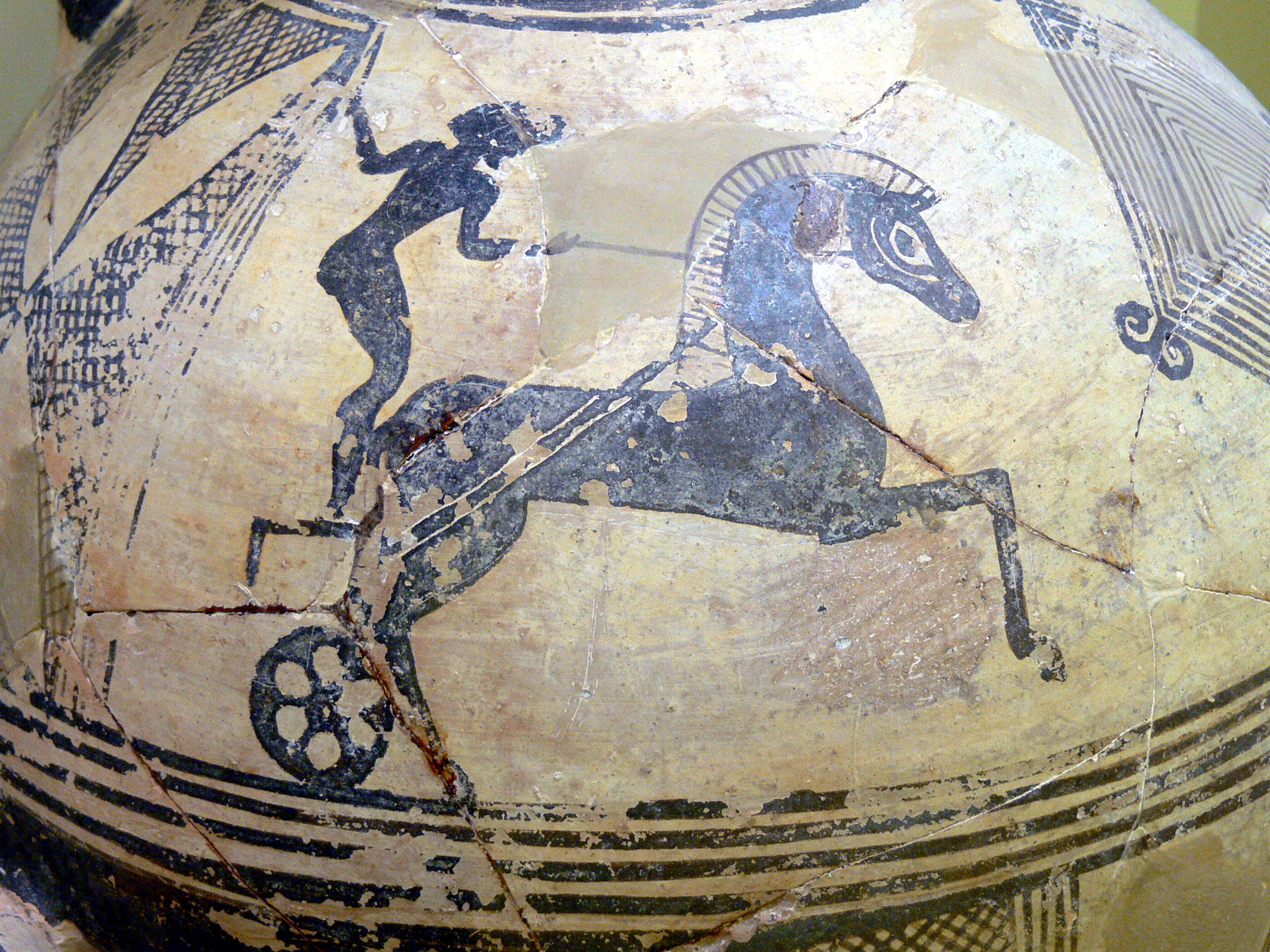Euryleonis on:
[Wikipedia]
[Google]
[Amazon]
 Euryleonis () (Flourished c. 370 BC,
Euryleonis () (Flourished c. 370 BC,
 Euryleonis () (Flourished c. 370 BC,
Euryleonis () (Flourished c. 370 BC, Sparta
Sparta was a prominent city-state in Laconia in ancient Greece. In antiquity, the city-state was known as Lacedaemon (), while the name Sparta referred to its main settlement in the Evrotas Valley, valley of Evrotas (river), Evrotas rive ...
, ancient Greece) was a celebrated woman, owner of a chariot
A chariot is a type of vehicle similar to a cart, driven by a charioteer, usually using horses to provide rapid Propulsion, motive power. The oldest known chariots have been found in burials of the Sintashta culture in modern-day Chelyabinsk O ...
-winner of Olympic games.
Euryleonis was a horse breeder from Sparta whose horse chariot won the two horse chariot races of the Ancient Olympic Games
The ancient Olympic Games (, ''ta Olympia''.), or the ancient Olympics, were a series of Athletics (sport), athletic competitions among representatives of polis, city-states and one of the Panhellenic Games of ancient Greece. They were held at ...
in 368 BC. She is sometimes referred to as a princess and wealthy woman.
Euryleonis was only the second female stephanite (crown-bearer) in the long history of the Olympics. Twenty-four years earlier, her predecessor, the Spartan princess Kyniska, had won the four horse race in 396 BCE and again in 392 BCE, the first ever woman to win at the Olympics.Women's History Month: Filling In the Blanks - Warren Women could not participate in Ancient Olympic games personally and even being a viewer was under strict prohibition for them, with punishment by death. The only possibility of participating and winning for a woman was to be an owner of a chariot and horses in chariot races, because just the owner, not the driver, was recognized as a winner of races.
Bronze statue
According to the Greek travel writer Pausanias (flourished 143–176 CE), a statue of Euryleonis was erected atSparta
Sparta was a prominent city-state in Laconia in ancient Greece. In antiquity, the city-state was known as Lacedaemon (), while the name Sparta referred to its main settlement in the Evrotas Valley, valley of Evrotas (river), Evrotas rive ...
c. 368 BCE. It is one of few bronze statues that survive from anywhere in the Greek world, and in writing there are no personal statues of athletic or military victors in Sparta
Sparta was a prominent city-state in Laconia in ancient Greece. In antiquity, the city-state was known as Lacedaemon (), while the name Sparta referred to its main settlement in the Evrotas Valley, valley of Evrotas (river), Evrotas rive ...
mentioned before the statue of Euryleonis. According to the Lacedaemonians
Sparta was a prominent city-state in Laconia in ancient Greece. In antiquity, the city-state was known as Lacedaemon (), while the name Sparta referred to its main settlement in the valley of Evrotas river in Laconia, in southeastern Pe ...
, the statue was located near the Skenôma, or tent. Another writer also described the statue as being near a tent, which has been suggested to be the small building mentioned by Thukydides as the place where King Pausanias took refuge. It is also said that the statue stood in the temple of Aphrodite
Aphrodite (, ) is an Greek mythology, ancient Greek goddess associated with love, lust, beauty, pleasure, passion, procreation, and as her syncretism, syncretised Roman counterpart , desire, Sexual intercourse, sex, fertility, prosperity, and ...
in Sparta.
References
Bibliography
* * 4th-century BC Spartans 4th-century BC Greek women Ancient Olympic competitors Ancient Spartan women Sportswomen in antiquity {{AncientGreece-bio-stub